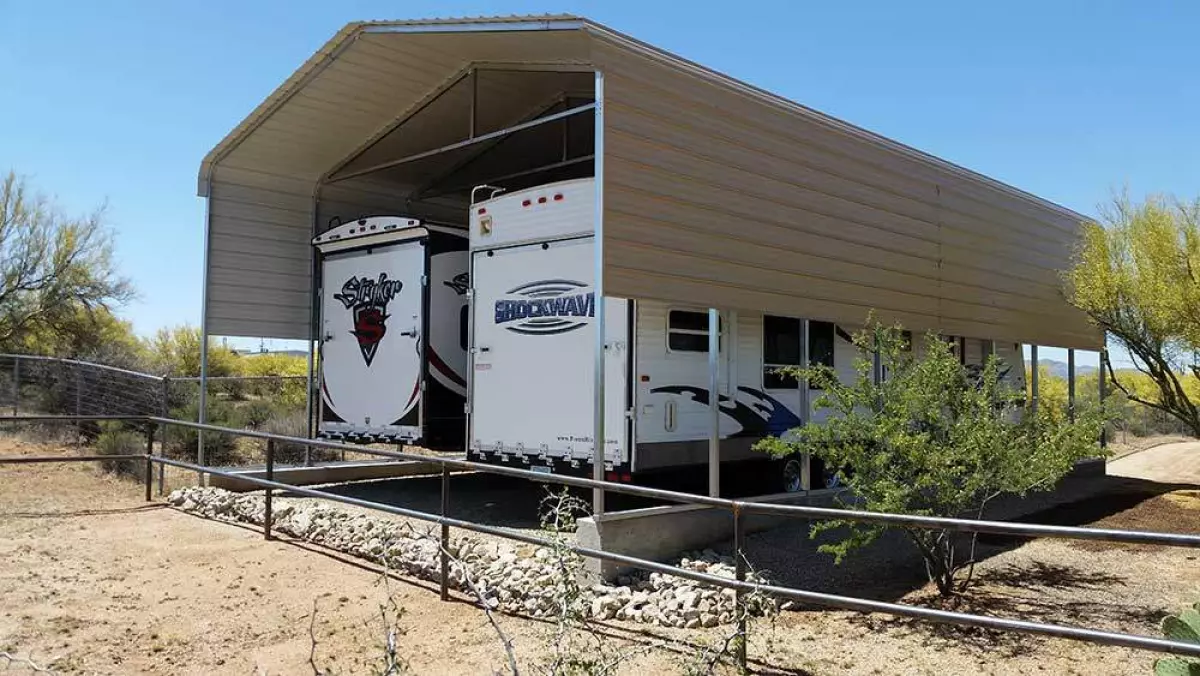 Absolute Steel Carports
Absolute Steel Carports
As RV owners, we know that our vehicles often spend more time in storage than on the road. The cost of storing an RV can be significant, especially if covered storage is available. Building a complete structure for storage can be expensive and complex. However, there is a solution - building your own DIY RV carport.
What exactly is a carport?
A carport is a roof supported by posts with open sides, usually attached to an existing structure like a house, garage, or barn. It provides one closed-in wall and a protective roof for your RV. Carports can be made of various materials, such as wood or metal posts and support beams, with roofs made of metal, wood, or UV-resistant fabrics.
Legal and safety considerations
Before starting any building project, it's important to check with your local authorities and obtain any required building permits. Building codes and regulations may vary depending on your location. Consider factors like high wind, snow loads, tornadoes, earthquakes, and other local considerations. Safety should always be a priority during construction, especially when working at heights.
Choosing the right location for your DIY RV carport
First, you need to decide where you want to build your RV carport. If possible, building it beside an existing structure provides extra protection with one side already closed. Ensure the ground is solid and level where your RV will be parked. Consider factors like sun exposure and wind direction, aiming for minimal exposure to the elements.
Options for your DIY RV carport
Building a DIY RV carport can be simplified with various options available to you.
DIY RV carport kits
One popular option is purchasing a DIY RV carport kit. These kits come with everything you need and require only ground preparation before assembly. Most kits can be anchored to an existing concrete slab or to concrete piles around the perimeter. If using a slab, ensure it is thick enough to support the structure. For those without a concrete base, following the kit's instructions, you'll need to dig holes and fill them with concrete. While some people may choose to hire professionals for this task, it can be done with rental equipment and pre-mixed concrete. Kits are generally easy to assemble with basic tools, and everything is pre-cut and labeled.
PVC piping
Another option is constructing your carport using PVC piping. This method is relatively easy, requiring minimal fasteners and tools. However, it may not be as strong as a kit or wooden structure. PVC piping is available in various lengths and diameters and can be easily cut by hand. Elbows, tees, and other connections allow you to create any shape or size of the structure you desire. This option is better suited for smaller RVs or temporary carports. Tarps or sunscreen material can serve as the cover. Keep in mind that a PVC structure requires proper anchoring to avoid wind damage.
Wood construction
For those with more construction know-how, building a solid wood structure is an excellent option. You can find plenty of online videos and plans to guide you through the process. Modern structural fasteners make wood construction faster and easier while ensuring structural integrity. Posts must be securely anchored using concrete footings or fence post-style anchors. Additionally, it's crucial to treat the wooden structure to protect against moisture and insects.
Although building your own DIY RV carport may seem like a big project, with proper planning and the help of friends and family, it can be a rewarding endeavor. Remember, the RVing community is always there to offer support and advice. Online forums like iRV2 provide a platform for engaging with fellow RV enthusiasts, where you can discuss everything from products and destinations to RV modifications and more.
Related articles:
- The Best Products To Prevent RV Roof Leaks
- Protecting Your RV Battery in Winter Storage









